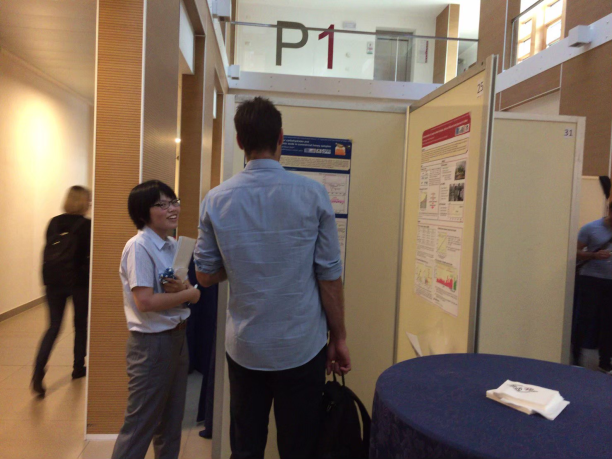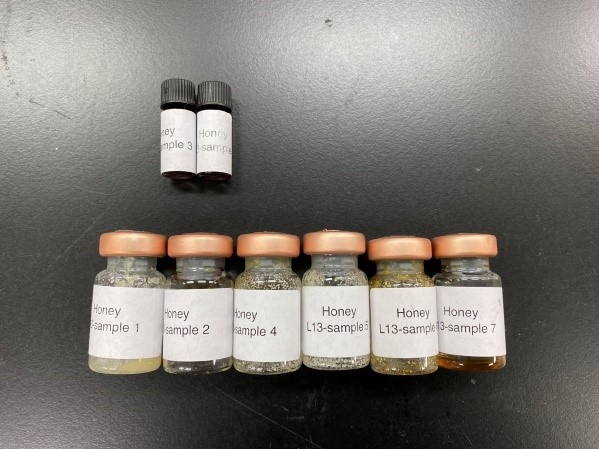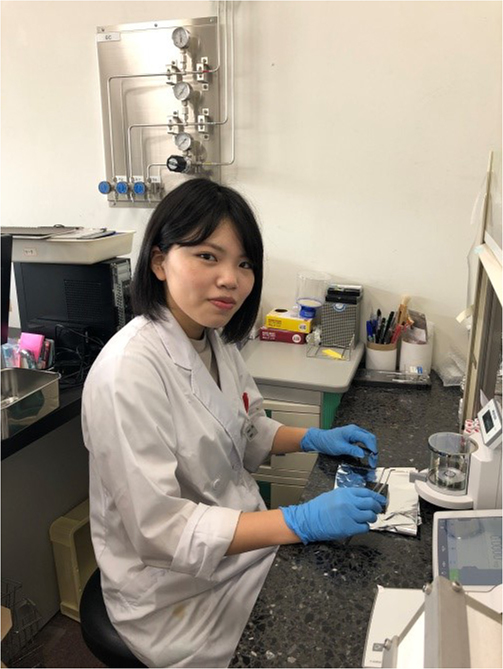The results of an interlaboratory comparison study on honey authentication, participated in by Momoka Suto, a graduate of the Graduate School of Systems Science and Technology, and Associate Professor Hiroto Kawashima (Department of Management Systems Engineering / Environmental Forensics Laboratory), have been published in the international academic journal Journal of AOAC INTERNATIONAL.
Journal: Journal of AOAC INTERNATIONAL
Paper Title: Results of an Interlaboratory Comparison of a Liquid Chromatography – Isotope Ratio Mass Spectrometry Method for the Determination of 13C/12C Ratios of Saccharides in Honey
(Translation: Results of an interlaboratory comparison of LC/IRMS for measuring carbon stable isotope ratios of saccharides in honey)
Authors: Eric Aries, Oliver De Rudder, Georgios Kaklamanos, Alain Maquet*, Franz Ulberth
DOI: doi/10.1093/jaoacint/qsab091/6373899
Research Overview
An interlaboratory comparison for honey authentication using liquid chromatography/isotope ratio mass spectrometry (LC/IRMS) was conducted by Dr. Alain Maquet, team leader of the Food Fraud Team at the Joint Research Centre (JRC) of the European Commission.
Currently, honey authenticity is determined by the AOAC (Association of Official Analytical Chemists) official method (AOAC Official Method 998.12), which analyzes the carbon stable isotope ratios of honey itself and proteins in honey to detect adulteration with saccharides. However, this method can only identify adulteration with C4 plant-derived sugars (such as corn syrup) and cannot detect adulteration with C3 plant-derived sugars (such as rice syrup). This raises concerns that adulteration using C3 sugars may be occurring at a significant level.
The recently developed LC/IRMS method allows carbon stable isotope ratio analysis of individual saccharide components, enabling detection of C4 sugar adulteration down to 1% (compared to 7% detection limit in conventional methods). Moreover, it can detect C3 sugar adulteration down to 10%, which was previously impossible, making it a promising tool gaining international usage.
This interlaboratory comparison involved 14 research institutions including universities and analytical laboratories from the Czech Republic, Germany, France, Italy, Spain, and Japan. Akita Prefectural University was the only Japanese institution participating. The results confirmed a consistent level of analytical precision across laboratories.
Based on these results, the LC/IRMS method may potentially be adopted as an AOAC official method in the future.
Comment from Ms. Momoka Suto
In November 2017, Dr. Alain Maquet and Dr. Eric Aries from the JRC invited Professor Kawashima to participate in this interlaboratory comparison. Eight samples of honey and syrups were sent to us, and we began analysis promptly. Although it was a busy time over the year-end and New Year holidays, we successfully reported the results in February 2018. The analytical precision was very good, and our results were comparable to those of other laboratories and institutes. I am very pleased and relieved that these results have been compiled into a published paper.
Since April this year, I have been working at the Japan Analytical Center, a public interest incorporated foundation located in Chiba Prefecture. It is the only public interest foundation in Japan conducting environmental radioactivity and radiation analysis, investigation, and research. I am engaged in stable isotope analysis of light elements such as carbon and nitrogen in food and environmental samples, applying the stable isotope techniques I learned during my university studies in my work.
 Poster Presentation at the Conference
Poster Presentation at the Conference
 Blind Samples Sent by the RC
Blind Samples Sent by the RC
 Current Status of Momoka Suto
Current Status of Momoka Suto
In addition, the Kawashima Laboratory has published a total of three papers related to honey: one proposing a stable improved method for LC/IRMS, another on the differentiation of 116 types of honey from domestic and international sources, and a third analyzing the stable isotope ratios of organic acids in honey using two-dimensional LC/IRMS (as detailed below).
〇Hiroto Kawashima*, Momoka Suto, Nana Suto (2018), Determination of carbon isotope ratios for honey samples by means of a liquid chromatography/isotope ratio mass spectrometry system coupled with a post‐column pump, Rapid Communications in Mass Spectrometry, vol.32, pp.1271-1279
→詳細はこちら(外部リンク)
〇Hiroto Kawashima*, Momoka Suto, Nana Suto (2019), Stable carbon isotope ratios for organic acids in commercial honey samples, Food Chemistry, vol.289, pp.49-55
→詳細はこちら(外部リンク)
〇Momoka Suto, Hiroto Kawashima*, Nana Suto (2019), Heart-cutting two-dimensional liquid chromatography combined with isotope ratio mass spectrometry for the determination of stable carbon isotope ratios of gluconic acid in hone, Journal of Chromatograph, 460421
→詳細はこちら(外部リンク)
このページに関する問合せ
 Poster Presentation at the Conference
Poster Presentation at the Conference Blind Samples Sent by the RC
Blind Samples Sent by the RC Current Status of Momoka Suto
Current Status of Momoka Suto